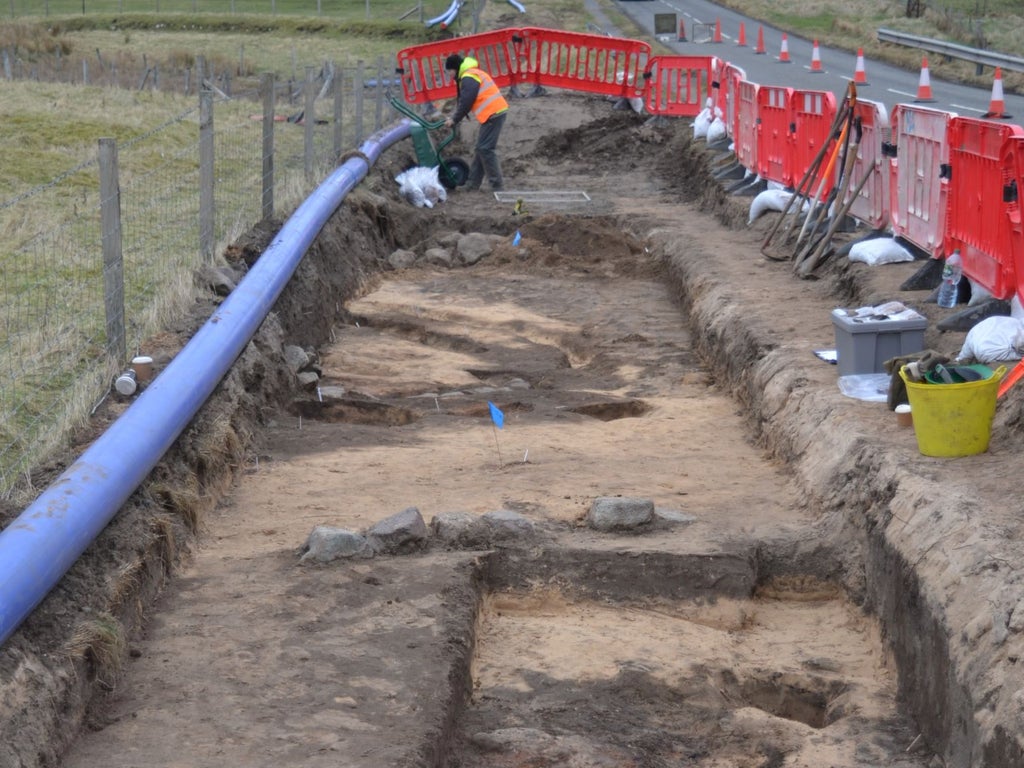
A rare medieval site has been discovered in the Outer Hebrides by water engineers after they dug up a field to lay new pipes.
The site, which may have been used to farm sheep around 500 years ago, was found close to Gress, Isle of Lewis, by Scottish Water workers.
Pits, postholes, stone features and some 100 pieces of pottery were discovered, as well as large bones of cod, haddock and other unidentified animals.
The site has been tentatively dated to between the 14th and 16th centuries.
It covers the period when the Lords of the Isles ruling dynasty came to an end and John MacDonald II had his ancestral lands and titles seized by James IV of Scotland in 1493.
Archaeologist Alastair Rees, of Archas Ltd, said the finds helped an understanding of the period on the island given very little evidence from the time has survived.
Mr Rees said: “We have very little evidence from the medieval period in the Western Isles, partly because of the organic nature of the buildings and possibly because many of the later blackhouse settlements obscured the earlier evidence.
“This discovery was not only very interesting, but helps greatly with our knowledge of this time period in the Western Isles.
“The features and artefactual evidence that has been recovered is suggestive of both food consumption and the processing of sheep and other animals.
“The fish bones that were recovered have been identified as coming from large examples of cod and haddock, up to 1.30m and 0.70m in length, which would have been caught in deeper waters on long lines.
“Parts of the head were also found suggesting that whole fish were taken to the site to be consumed.”
The pottery shards were first thought to have dated from the prehistoric period.
But a badly corroded small coin found among the pieces brought the dating of the site forward to the medieval years.
The fragments were later found to be Craggan Ware – a type of rough, handmade pottery from the islands that was still produced up to the early 20th century.
The site was discovered during a £9.3m project to renew about 13 miles of water mains between Marybank and Tolsta.

Project manager Lee Biddulph said: “We take our responsibility to protect the historic environment seriously and are pleased to have worked alongside Comhairle nan Eilean Siar and Archas to ensure this important discovery was conserved and properly recorded.
“Work on the project has now entered the final stages before the new infrastructure comes into service later this year.”
Kevin Murphy, of the Western Isles Archaeology Service, said: “The team of archaeologists who worked hard in poor weather conditions have given us an important glimpse into a period that is not well represented in the Outer Hebrides.
“While we don’t know the exact function of this site, the assemblage recovered from it will be an important asset to researchers of Medieval period in the Outer Hebrides.”
SWNS







